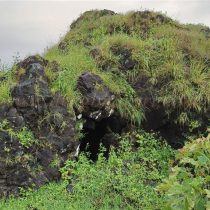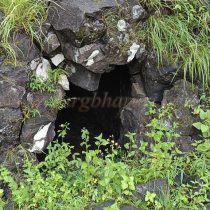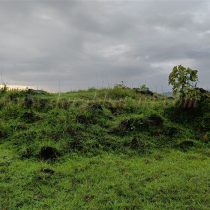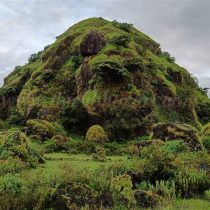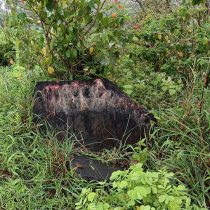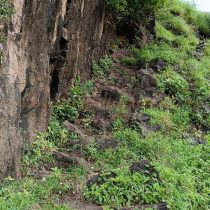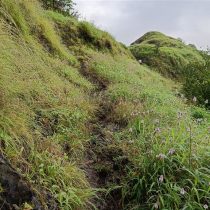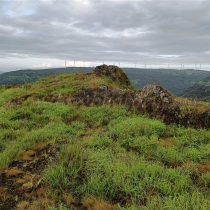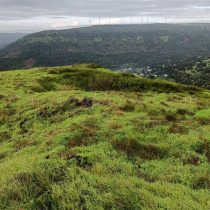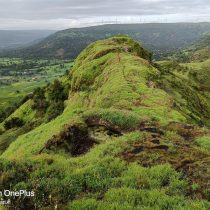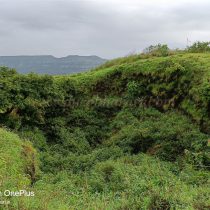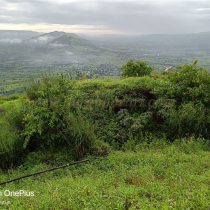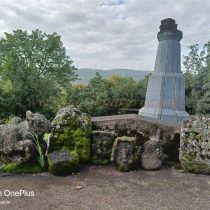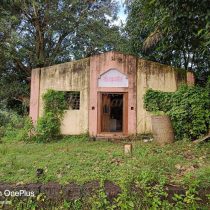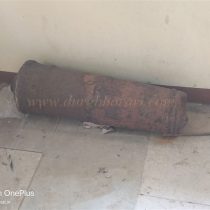GUNVANTGAD
TYPE : HILL FORT
DISTRICT : SATARA
HEIGHT : 2640 FEET
GRADE : MEDIUM
There are two unrecognized forts known as Morgiri in Maharashtra. One of these forts is in Maval taluka of Pune district and the other is in Satara district. Gunwantgad is the real identity of this fort, which is known by the same name because of Morgiri village located at the foothills in Patan taluka of Satara district. Morgiri village is 10 km from Patan taluka place and there is a rough path going to the fort behind Bhairavanath temple in the village. Outside the Bhairavanath temple, two sculptures and few more are placed on a porch and a slab with a partially carved sculpture can be seen in the lower part. A broken cannon is kept in the Ram temple near the Bhairavanath temple. As there is no potable water at the fort, one should take enough water from the village and start climbing the fort. Behind Morgiri village, the hill of the fort is spread towards the south-east and there is a small plateau of the fort near the northern end.
...
After starting to climb the fort, we should start climbing towards this plateau on the left. We reach this plateau in half an hour from the base. The ruins of some houses are scattered on this plateau, and some stone ramparts and the foundation of a bastion can be seen on the edge. Among the remains on the Plateau are the base of some houses and a decayed sculpture as well as an intact rock-carved (ekashma) cave. After seeing the remains on the Plateau, one should start climbing the edge of the valley towards the middle of the hill. After crossing this slightly bumpy path, we reach the carved stairs of the fort. Today, this step is largely worn out. After crossing these steps and the next path, we reach the top of the fort. The door on this road is completely extinct today. Half an hour is enough to reach the top from the base. The top is 2640 feet above sea level and spread over about 3 acres. The top of the fort is a narrow plateau and the buildings on it have been completely destroyed. While walking on the left side, we can see the base of a building as well as sunken water tanks and a dry lake. On the right side are rock-carved dry water tanks and beyond that are rock-carved steps. After going up these stairs, a big well dug in the rock and the foundation of some houses can be seen. At the northern end of the fort there is a place from where the entire fort can be seen in a glimpse. This bastion on the northern end of the fort is somewhat strong and from this bastion the Koyna riverbed, Dategad and the distant region can be seen. At this place our fort trek ends. Half an hour is enough to see the entire fort. Given the location of the fort and its overall size, this fort was probably built to monitor the medieval trade route Karad – Chiplun. Looking at the size of the fort, its architecture and water facilities, it must have been used only for surveillance purposes. Looking at the history of the fort, around 1526, Tukojirao and Ramrao, the descendants of Chalukya royal family Sorbaji Sawant Salunkhe, who acquired the territory of Gunwantgad and Dantagiri region, were appointed by the Bijapur court as Mokasedar for the settlement of Satara and Konkan belt areas. From Kalyan Subha of Bijapur, Tukoji Rao along with his brother Ram Rao set out with an army of 5000. First of all, he came to Satara province and conquered Patan region. After that, after breaking the ruckus in Sangameshwar taluka, he shifted his march towards Ratnagiri. Due to this performance, AdilShah assigned all the territories conquered by Tukojirao to his deployment. In the 18th century, Pantapratinidhi's people used to live in this fort and Dategad and when the orders of the Peshwa’s came out, they used to implement strategies to overcome problems. So the Peshwa took control of this fort and kept their main center there. In the Maratha-British war of 1818 AD, this fort was handed over to the British without any fighting. If you plan your time properly, you can visit the four forts Machhindragad, Gunwantgad, Dategad and Vasantgad in one day by private vehicle.
© Suresh Nimbalkar

